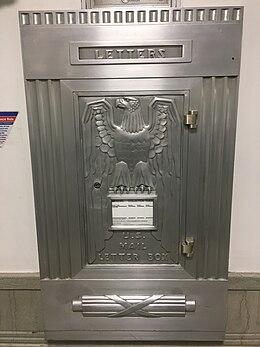
The United States Postal Service (USPS), also known as the Post Office, U.S. Mail, or Postal Service, is an independent agency of the executive branch of the United States federal government responsible for providing postal service in the U.S., including its insular areas and associated states. It is one of the few government agencies explicitly authorized by the Constitution of the United States. The USPS, as of 2021, has 516,636 career employees and 136,531 non-career employees.

George Eastman was an American entrepreneur who founded the Eastman Kodak Company and helped to bring the photographic use of roll film into the mainstream. After a decade of experiments in photography, he patented and sold a roll film camera, making amateur photography accessible to the general public for the first time. Working as the treasurer and later president of Kodak, he oversaw the expansion of the company and the film industry.

The Democrat and Chronicle is a daily newspaper serving the greater Rochester, New York, area. Headquartered at 245 East Main Street in downtown Rochester, the Democrat and Chronicle operates under the ownership of Gannett. The paper's production facility is in Rockaway, New Jersey. Since the Times-Union merger in 1997, the Democrat and Chronicle is Rochester's only daily circulated newspaper.

A letter box, letterbox, letter plate, letter hole, mail slot or mailbox is a receptacle for receiving incoming mail at a private residence or business. For outgoing mail, Post boxes are often used for depositing the mail for collection, although some letter boxes are also capable of holding outgoing mail for a carrier to pick up. Letterboxes or mailboxes use the following primary designs:

A post box, also known as a collection box, mailbox, letter box or drop box is a physical box into which members of the public can deposit outgoing mail intended for collection by the agents of a country's postal service. The term post box can also refer to a private letter box for incoming mail.
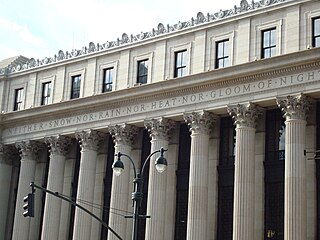
"Neither snow nor rain nor heat nor gloom of night stays these couriers from the swift completion of their appointed rounds" is a phrase long associated with the American postal worker. Though not an official creed or motto of the United States Postal Service, the Postal Service acknowledges it as an informal motto along with a slightly revised version of Charles W. Eliot's poem "The Letter".

The Rochester Zeniths were a professional basketball team in the Continental Basketball Association (CBA). They played in Henrietta, New York, a suburb of Rochester at the Dome Arena and in downtown Rochester, New York, at the Blue Cross Arena at the War Memorial. They existed for six basketball seasons, winning two league titles and generally had great success on the basketball court before they disbanded after the 1982/83 season.
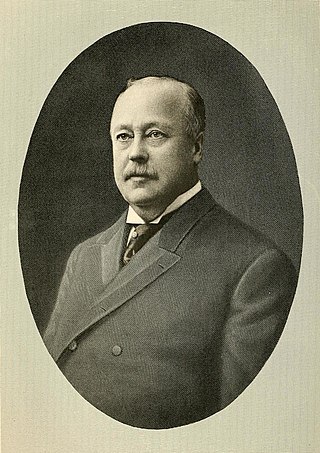
Lyman Cornelius Smith (1850–1910) was an American innovator and industrialist. He is buried in a mausoleum in Oakwood Cemetery in Syracuse, New York.
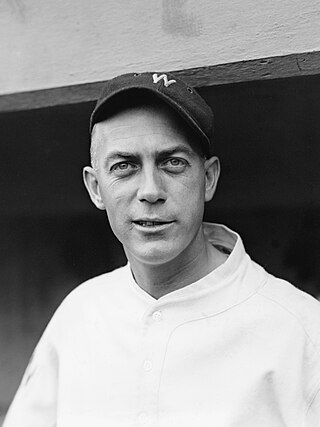
George Anthony Mogridge was an American professional baseball pitcher. He played in Major League Baseball for the Chicago White Sox (1911–12), New York Yankees (1915–20), Washington Senators (1921–25), St. Louis Browns (1925), and Boston Braves (1926–27). Mogridge threw the first no-hitter for the Yankees franchise in 1917 and was a member of the 1924 World Series champions with the Senators.

Penfield High School (PHS) is a public high school in Penfield, New York, United States. It offers a comprehensive curriculum for students in grades 9–12.
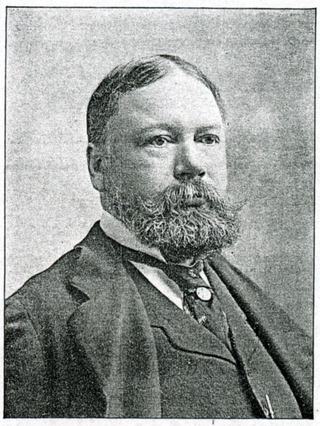
James Goold Cutler was a prominent Rochester, New York, architect and businessman, and served as the 48th mayor of Rochester from 1904 to 1907.

Wilder Building is a historic office building located in Rochester, New York. It is an eleven-story steel or iron framed brick clad structure built between 1887 and 1888 in a modified Romanesque style. It is considered Rochester's first modern skyscraper, and is considered to be among the oldest of the early skyscrapers. It was designed by noted Rochester architects Warner & Brockett.

Avon Station is a former railroad station 3943 for the Erie Railroad, located at 100 West Main Street, Avon, Livingston County, New York.
The Electro-Dynamic Light Company of New York was a lighting and electrical distribution company organized in 1878. The company held the patents for the first practical incandescent electric lamp and electrical distribution system of incandescent electric lighting. They also held a patent for an electric meter to measure the amount of electricity used. The inventions were those of Albon Man and William E. Sawyer. They gave the patent rights to the company, which they had formed with a group of businessmen. It was the first company in the world formally established to provided electric lighting and was the first company organized specifically to manufacture and sell incandescent electric light bulbs.
B. Forman Co. was a retail store in Rochester, New York, specializing primarily in high-end women's clothing. Once the largest store of its kind between New York and Chicago, the company, founded by Benjamin Forman in the first decade of the twentieth century, closed in 1994. B. Forman Co., along with McCurdy & Co., created Rochester's Midtown Plaza.
The 1906 Colgate football team was an American football team that represented Colgate University as an independent during the 1906 college football season. In its first season under head coach Bill Warner, the team compiled a 4–2–2 record. Ralph Knapp was the team captain. The team played its home games on Whitnall Field in Hamilton, New York.
The 1931 Colgate football team was an American football team that represented Colgate University as an independent during the 1931 college football season. In its third season under head coach Andrew Kerr, the team compiled an 8–1 record, shut out five of nine opponents, and outscored all opponents by a total of 227 to 34. John Orsi was the team captain. The team played its home games on Whitnall Field in Hamilton, New York.
18 East 50th Street, also known as the Hampton Shops Building and the New York Health & Racquet Club Building, is an office building in the Midtown Manhattan neighborhood of New York City. Located on the south side of 50th Street, on the middle of the block between Fifth Avenue and Madison Avenue, it was designed by William Lawrence Rouse, Lafayette Anthony Goldstone, and Joseph L. Steinam.
Frederick Douglas Losey was an American Shakespearian scholar and elocutionist. He was the head of rhetoric and public speaking at Syracuse University and also taught at the University of Alabama. He was considered "America's greatest interpreter of Shakespeare." During the 1920s, he was also "as well known as the celebrities of the professional stage."

Edgerton is a neighborhood in the Northwest Quadrant of Rochester, New York that sits between the Genesee River on the east and the Erie Canal bed on the west. One of the city's oldest and largest residential areas, Edgerton is among the most ethnically, linguistically, and racially diverse communities in Western New York. The neighborhood has been called "the Bermuda Triangle of Rochester" because of its "nearly invisible" status in local politics. Edgerton is currently the poorest neighborhood in Rochester, with an Unemployment Rate higher than that of the United States during the Great Depression.



